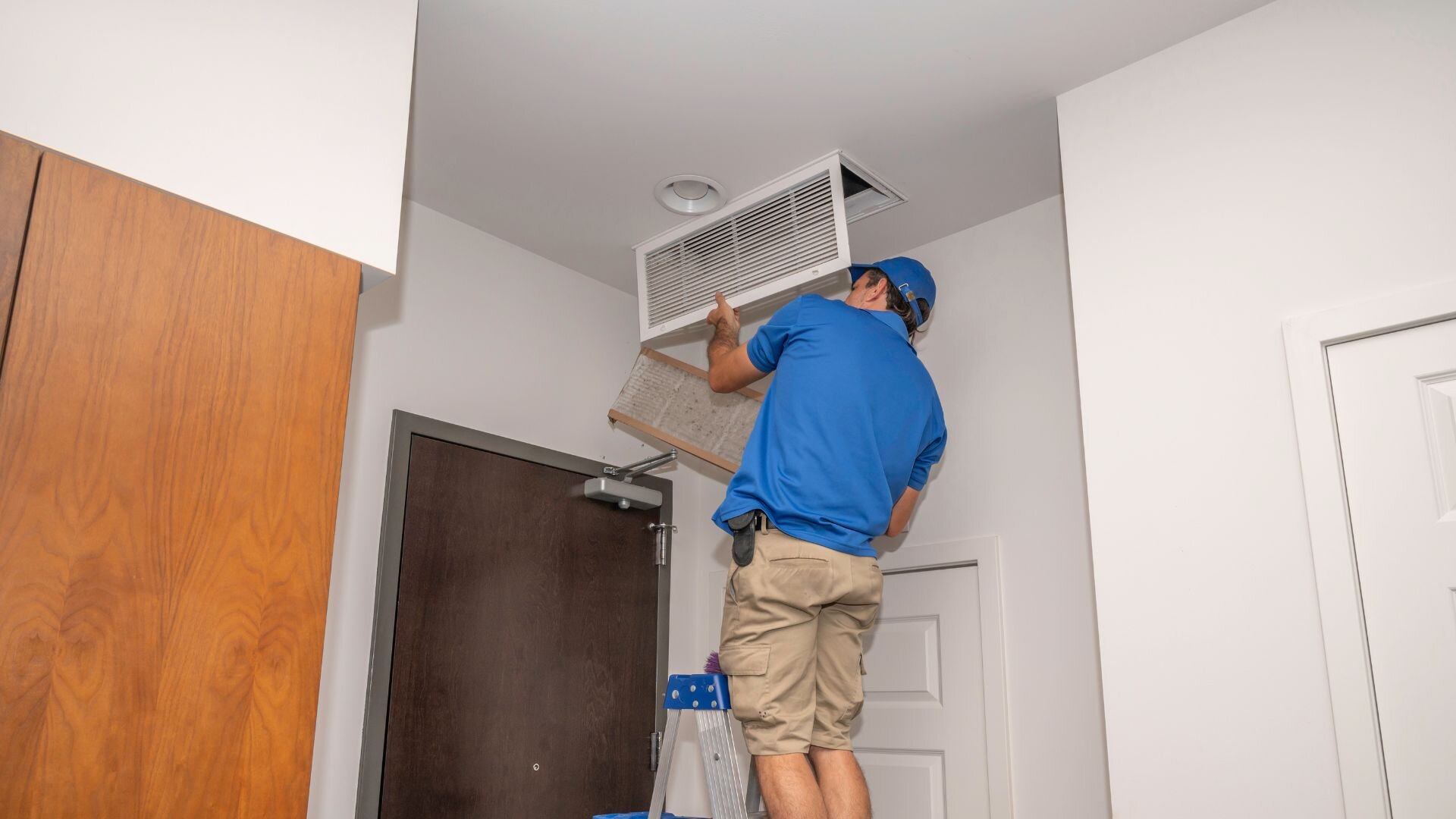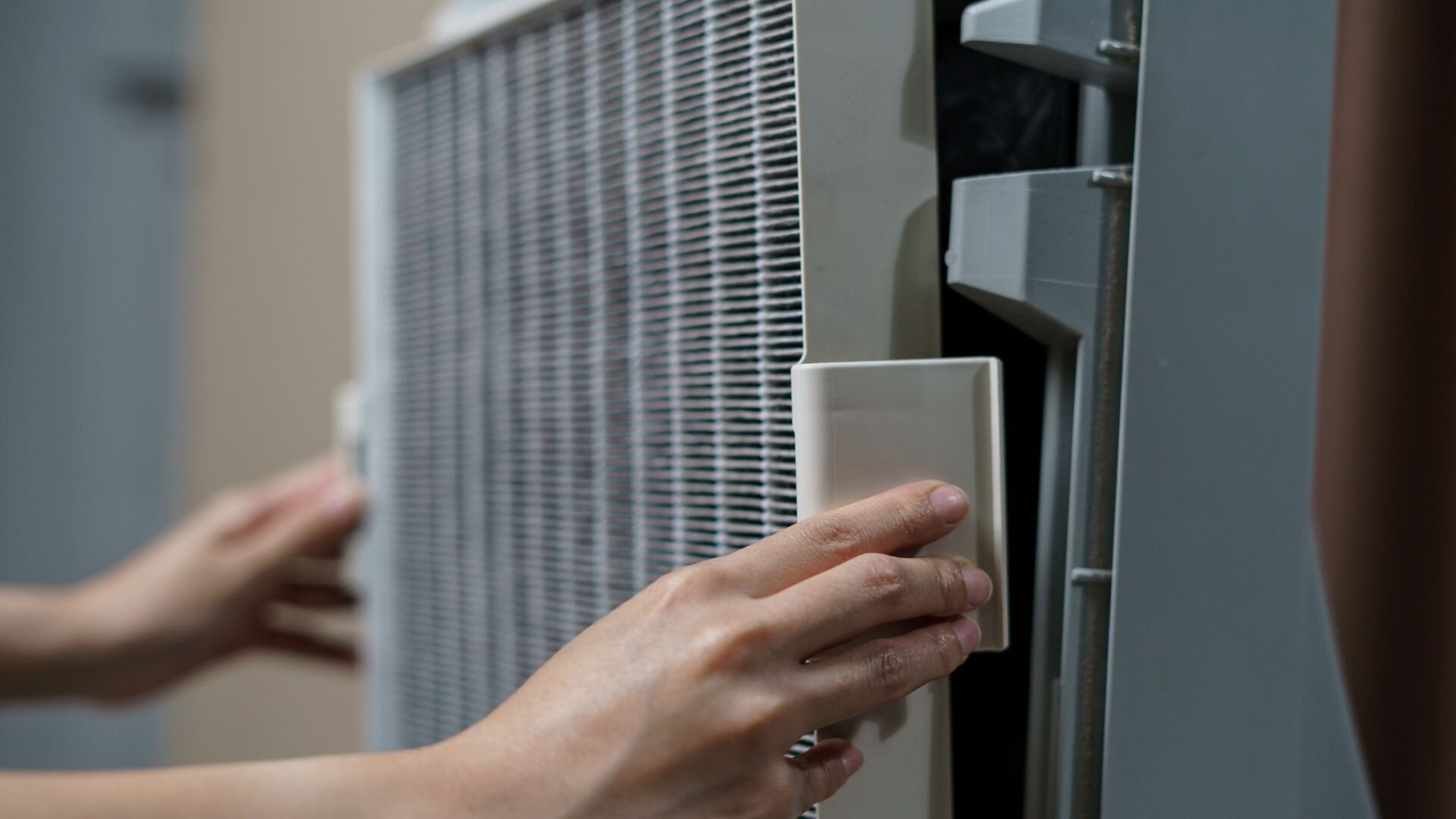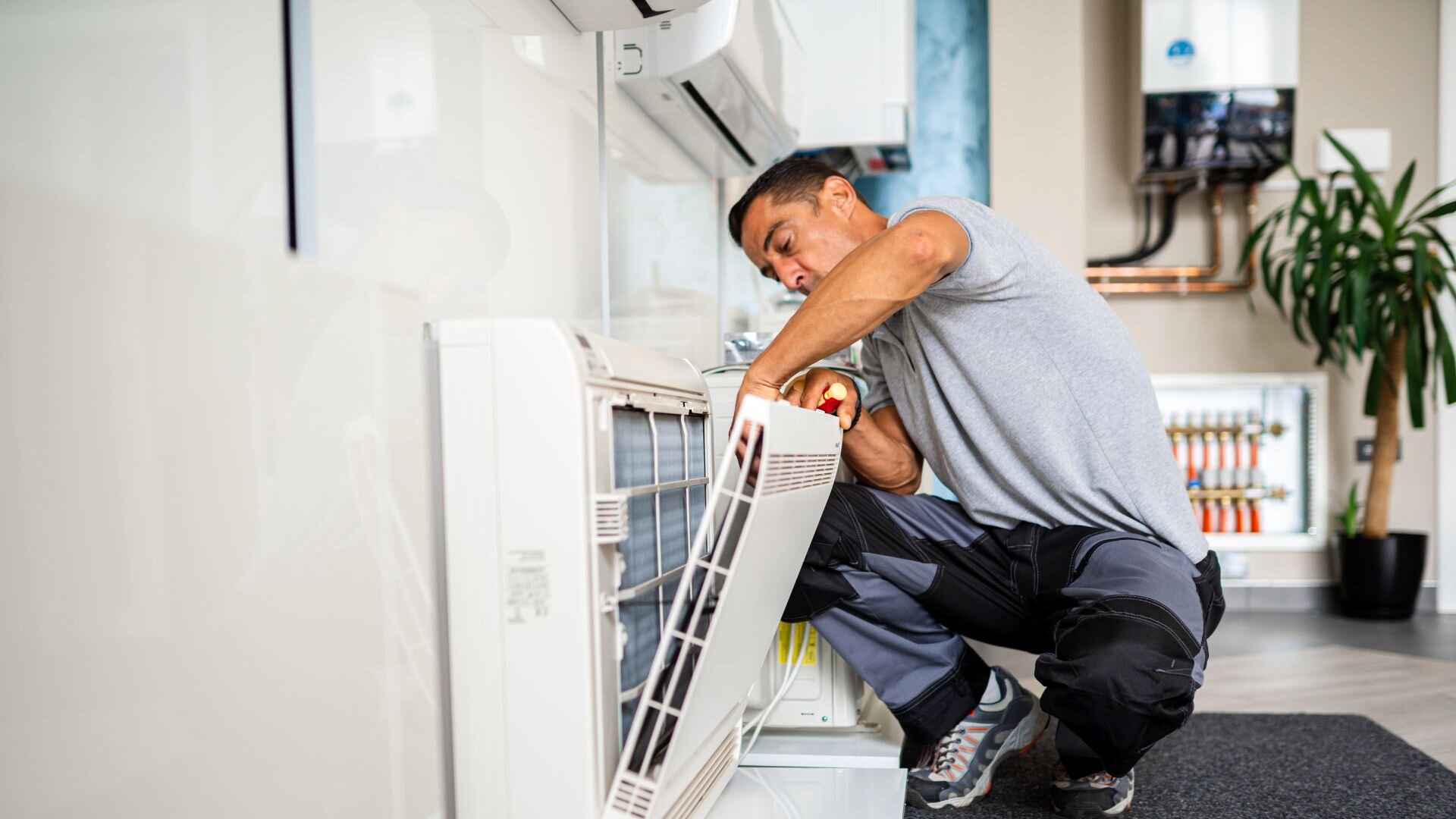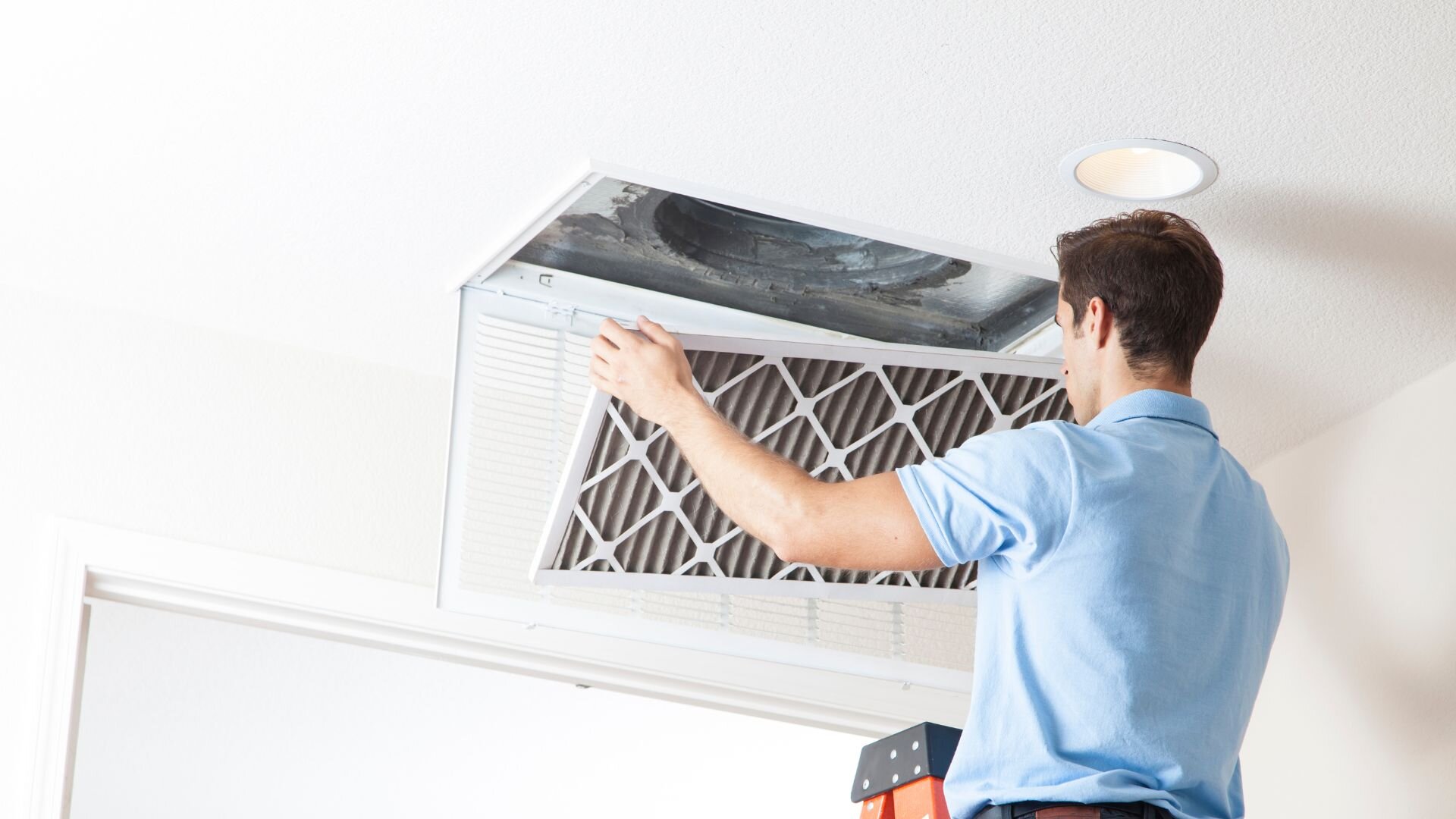Keeping the air filters clean in your air conditioning system is crucial to its performance and efficiency. When filters get clogged and dirty, they block airflow, making the system work harder and increasing energy costs. By regularly replacing your air filters, you can ensure your air conditioner runs at its best, helping you save on bills and prolonging the unit’s lifespan.
At Enersol, our Air Conditioning Services Gold Coast - This guide will take you through the straightforward steps to find, remove, and replace the air filter in your AC unit. By using the correct method to change your filter, you can trap dust particles, pet hair, and other pollutants before they spread through your home. Keeping your air conditioner filters clean boosts indoor air quality, reduces strain on your HVAC system, and helps ward off respiratory issues.
Locate the Filter
The first step is finding the dirty air filter in your specific air conditioning unit. Learn more about benefits of ducted air conditioning systems. In central air conditioning systems, the filter is usually located along the return air duct leading to the air handler unit. There may be an access panel or door specifically for the filter that can be unlatched and opened.

For wall or window units, the filter is usually tucked behind the front grille. You’ll often need to push in clips or depress tabs to pop off the cover and access the filter. If you’re unsure where to begin, consult your owner’s manual for guidance.
After you’ve found the filter, jot down its size and whether it’s reusable or disposable. Measure it if necessary to ensure you buy an exact match. If it’s disposable, you’ll need a new one of the same dimensions.
Removing the Old Air Filter
Before removing the old filter, turn off the power on your AC unit and the thermostat. This ensures the fan does not turn on with the cover open. Locate the access panel for the air filter, unlatch it and carefully slide out the old filter to remove it. Inspect the condition of the air filter you use as you remove it. A very dirty or clogged filter means high air restriction, and your system has been working extra hard. Make a mental note or write down a replacement reminder for shorter intervals if it is excessively dirty.

Selecting a Replacement Air Conditioner Filter
Take the old filter with you to find a suitable replacement. Match the physical dimensions precisely, getting the same thickness and size. For disposable types, choose a filter with a MERV rating between 8 and 12 for optimal performance.

Compare different brand options and prices, looking at reviews and ratings for insight on quality and longevity. Reusable filters can be a good option if you want to save money in the long term through repeated use. Disposable filters need to be swapped out each time.
Ensure you purchase a filter made specifically for air conditioners. While furnace filters might look similar, they won’t work correctly in your AC unit. Steer clear of generic bargain filters that don’t adhere to manufacturer’s guidelines. Look for official certification on the packaging to guarantee quality.
Installing the New Air Conditioning Filter
Once you have the new filter, carefully remove any plastic wrapping and orient it the same way as the used filter it replaces. Slide the clean filter fully into position, pressing gently around the edges to ensure it seats securely in the tracks.
Close the access panel and ensure the latches catch properly or the front cover is back into place. Double-check that the filter compartment is properly sealed so no air bypasses around the edges.

Restarting the AC System
With the new air filter installed, you can power the system back on at the thermostat. Set your desired temperature to trigger the AC and confirm that it activates and blows cold air.
Listen for rattling noises that indicate the filter is not fully seated. Running the fan only can help determine airflow strength as well. The initially discharged air may be a bit musty from dust dislodged in the process, but it should quickly blow clean.
Tips for Air Filter Maintenance
Write the install date on the filter to track when it’s time to replace the AC filter again. Calendar reminders can also prompt you to swap it based on manufacturer’s guidelines - typically every 1 to 3 months.
Regular cleaning is essential if you have a reusable filter in your home. Use a mild detergent and water to remove accumulated dust and dirt. Rinsing thoroughly prevents odour build-up. Allow sufficient drying time before putting it back into service.
Vacuuming out the air return vent, dirty coils, and fins on the outside condenser unit will also maximise airflow. Keep the immediate area clear of debris and overgrown vegetation. Propermaintenance steps for the filters and overall HVAC system keep everything operating optimally.
Upgrade Your AC’s Performance
Regularly changing your air conditioning filter is one of the easiest DIY maintenance tasks to keep your system running efficiently all season long. However, some repairs or issues are best left to professionals.
If your AC is still not cooling properly even after changing the filter, it likely needs servicing by a trained HVAC technician. The professionals at Enersol Electrical offer complete air conditioning repair, installation, and maintenance services to keep your system operating at peak performance.
With years of hands-on experience, our skilled technicians can diagnose and fix any AC problem. We stock a full range of filters and components to get your system back up and running quickly. Enersol Electrical handles electrical panel upgrades, wiring issues, and generator installation.
Contact our team today to schedule a tune-up or repair appointment! Keeping your air conditioner well-maintained through regular filter changes and professional servicing ensures reliability when needed. Call Enersol Electrical for all of your AC and electrical needs!
Frequently Asked Questions About Changing AC Filters
How often should I change my air conditioner filter?
Most manufacturers recommend changing your AC filter every 30-90 days, depending on use. Check your owner’s manual for the recommended interval. Filters may need to be changed more frequently during peak usage months.
What size filter do I need?
Check the dimensions of your existing filter and buy a replacement of the same size. Measure the length, width, and thickness precisely to match.
What type of filter is best?
Disposable pleated filters with a MERV rating of 8-12 offer a good balance of filtering performance, cost, and longevity for residential AC units. Reusable types like mesh or foam can be cleaned instead of replaced.
Where is the filter located in my AC unit?
For central air systems, look for a filter slot along the return air duct leading to the air handler. Window units have filter access behind the front grille. If you are unsure, check your owner’s manual.
Should the filter face a certain direction?
Yes, air should pass through the filter in the proper direction, as indicated by arrows on the frame. This aligns the filter pleats for optimal airflow.
How do I clean a reusable filter?
Use mild soap and water to scrub the filter surface, rinse thoroughly, and allow to completely air dry before reinstalling to prevent mould growth. Follow manufacturer guidelines.
When should I call a technician?
If your AC is still not performing properly after changing the filter, call a technician to inspect for issues like refrigerant leaks, blower problems, clogs, etc. Don’t forget annual maintenance!
Can a dirty filter damage my AC?
Yes, lack of airflow due to a clogged filter can damage the blower motor and compressor over time due to overheating and strain. Change filters regularly! Explore our Air Conditioning Services Gold Coast to learn more.